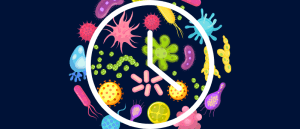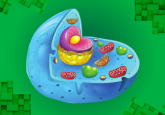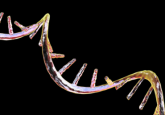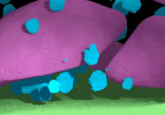AnoxyGen: how anaerobic bacteria could unlock the next wave of pharmaceutical development

The secrets of anaerobic bacteria have long remained a mystery, but a newly issued grant could release a new wave of insights from these elusive microbes.
A team of researchers led by Christian Hertweck of the Leibniz Hans Knöll Institute (Jena, Germany) has received an Advanced Funding grant from the European Research Council (ERC; Brussels, Belgium) to enable them to study anaerobic bacteria. Using a suite of cutting-edge synthetic biology tools, the team hopes to unlock a new realm of drug candidates and therapeutic targets.
The earliest metabolic pathways to develop on Earth did so in a time before photosynthesis, in an atmosphere devoid of oxygen. While oxygen-dependent metabolic pathways have become the default for the animal kingdom and many other organisms, anaerobic bacteria persist to this day, some even in close proximity to humans, such as within the symbiotic environment of our intestinal microbiome.
Commenting on the extensive impact of these microbes on today’s world, Evelyn Molloy, a Postdoc in Hertweck’s lab, noted that on a “global scale, the degradation of organic matter by anaerobes is central to the carbon cycle. Some have also found biotechnological applications in solvent and biofuel generation. In contrast to these beneficial attributes, many anaerobic bacteria can cause serious disease. Given the impact of anaerobes on the quality of life on Earth, there is a pressing need to investigate their specialized metabolites, which can act as mediators of microbial and host interaction.”
 What’s your gut’s favorite time of day?
What’s your gut’s favorite time of day?
A new study reveals that time of day is a key factor affecting the composition of the gut microbiome, calling for researchers to report it in their studies.
Anaerobic bacteria have increasingly been recognized as having an impressive capacity to biosynthesize unique and specialized metabolites, including metabolites of potential medicinal relevance. However, the complexity of culturing anaerobes, combined with the difficulty of mimicking the unknown natural cues that induce biosynthesis, has led to a dearth of research into their unique metabolites. “Furthermore,” commented Molloy, “genetic manipulation of anaerobic bacteria is notoriously difficult, hindering attempts to activate biosynthesis in the native producers. Another hurdle is the involvement of oxygen-sensitive enzymes in biosynthesis, inhibiting their function in standard heterologous expression hosts.”
It is in pursuit of a solution to these technological problems that Hertweck has established the AnoxyGen Project, explaining that his team wants “…to provide novel methods and tools for the scientific community.” The AnoxyGen project will develop a suite of molecular and synthetic biology tools, the pinnacle of which will be a powerful anaerobic expression system that can be used to produce and engineer novel compounds from anaerobic bacteria as potential drug candidates.
Alongside the discovery of valuable pathways and molecules for drug development and biosynthesis, this project will also enable the investigation of the toxins and virulence factors of harmful anaerobic bacteria, such as Clostridium botulinum, which causes botulism. By decrypting the roles of specialized metabolites in pathogenic lifestyles, new targets for anti-infective strategies could be unveiled.
The potential impact on biosynthesis, drug discovery and infection biology has resulted in the AnoxyGen Project receiving 5-years’ worth of funding from the ERC to a value of almost €2.5 million. We will be fascinated to see what emerges from the group in the coming years.




